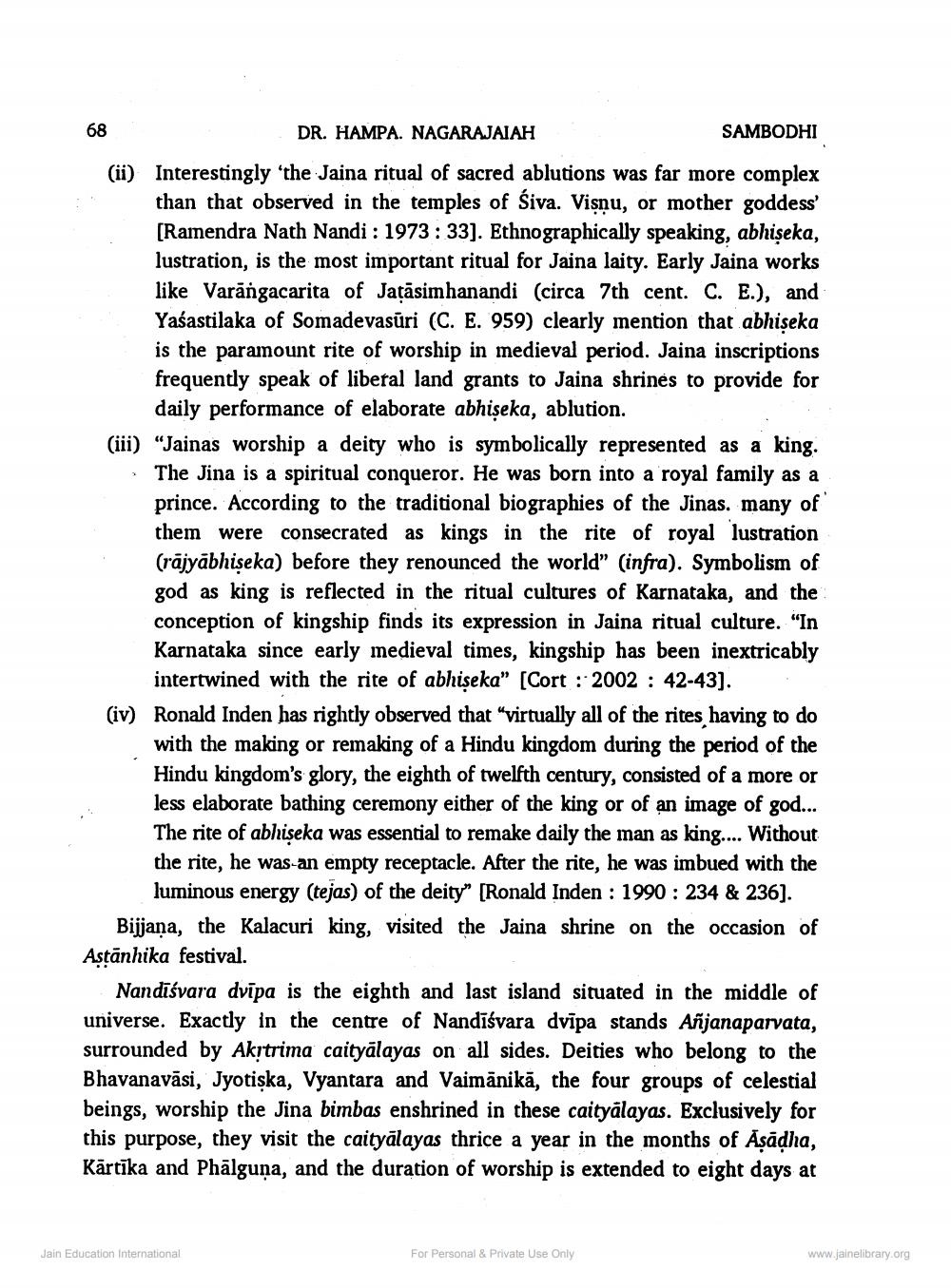________________
68
DR. HAMPA. NAGARAJAIAH
SAMBODHI (ii) Interestingly "the Jaina ritual of sacred ablutions was far more complex
than that observed in the temples of Siva. Visņu, or mother goddess' [Ramendra Nath Nandi : 1973: 33]. Ethnographically speaking, abhiseka, lustration, is the most important ritual for Jaina laity. Early Jaina works like Varāngacarita of Jatāsimhanandi (circa 7th cent. C. E.), and Yaśastilaka of Somadevasūri (C. E. 959) clearly mention that abhiseka is the paramount rite of worship in medieval period. Jaina inscriptions frequently speak of liberal land grants to Jaina shrines to provide for
daily performance of elaborate abhiseka, ablution. (iii) “Jainas worship a deity who is symbolically represented as a king. · The Jina is a spiritual conqueror. He was born into a royal family as a
prince. According to the traditional biographies of the Jinas, many of them were consecrated as kings in the rite of royal lustration (rājyābhiseka) before they renounced the world" (infra). Symbolism of god as king is reflected in the ritual cultures of Karnataka, and the conception of kingship finds its expression in Jaina ritual culture. "In Karnataka since early medieval times, kingship has been inextricably
intertwined with the rite of abhiseka" (Cort :-2002 : 42-43). (iv) Ronald Inden has rightly observed that “virtually all of the rites having to do
with the making or remaking of a Hindu kingdom during the period of the Hindu kingdom's glory, the eighth of twelfth century, consisted of a more or less elaborate bathing ceremony either of the king or of an image of god... The rite of abhişeka was essential to remake daily the man as king.... Without the rite, he was an empty receptacle. After the rite, he was imbued with the
luminous energy (tejas) of the deity” (Ronald Inden : 1990 : 234 & 236). Bijjana, the Kalacuri king, visited the Jaina shrine on the occasion of Astānhika festival.
Nandīśvara dvīpa is the eighth and last island situated in the middle of universe. Exactly in the centre of Nandīśvara dvipa stands Añjanaparvata, surrounded by Akitrima caityālayas on all sides. Deities who belong to the Bhavanavāsi, Jyotiska, Vyantara and Vaimānikā, the four groups of celestial beings, worship the Jina bimbas enshrined in these caityälayas. Exclusively for this purpose, they visit the caityālayas thrice a year in the months of Aşāļha, Kārtīka and Phālguna, and the duration of worship is extended to eight days at
Jain Education International
For Personal & Private Use Only
www.jainelibrary.org




